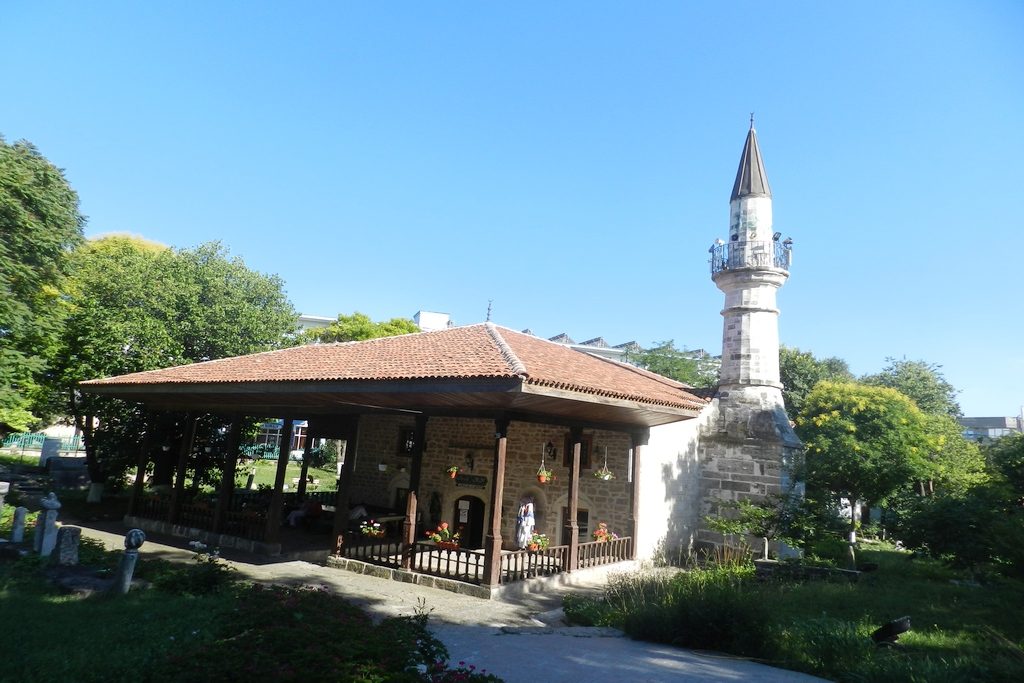

The mosque was built in the year 1525 by the daughter of the sultan Selim the IInd (1566 – 1575), who was the wife of Sokollu Mehmed Pașa, her father’s vizier. The mosque is surrounded by a Moslem cemetery, equally valuable because of its antiquity, as well as from the cultural point of view, as well as spiritually, which comprises ancient tombs of over 300 years. At the construction of the mosque it has been used stone taken from the walls of the Callatis borough. The ritual fountain, situated in the mosque’s courtyard, has been built with stone originated from an old Roman tomb. After 1989, the mosque was rearranged with the help of the City Hall of the Municipality of Mangalia. In the communist period, the worship institution was un-weeded, and the cemetery was no longer delimited of any kind of fence. After a few years following the Revolution, the Turkish tombs, more than 300 years old, as well as the mosque, have been rearranged, and the yard was delimited by a tall fence. The Turkish-Tatar community from Mangalia is currently composed of over 3.000 Moslem worshipers. Among them, the elders are the ones who come every day at the ritual prayers. The Islamic prayer is practiced daily, five times a day, and the calling of the imam is heard in the entire town: Allahu Akbar! – Allah is mighty!
The Moslem women aren’t allowed to assist at the prayers from the Mosque, except for a few holidays (for example, at the celebration of the birth of the Mohamed Prophet, or in the day in which the Koran started to be revealed). Not even in the days of Fridays, celebrated by the Moslems, they aren’t allowed to participate at the services. When they come to the mosque, they used to always sit facing the entrance, behind the men. Currently, the mosque can be visited by tourists and by the town’s habitants, and Mullah Halil Ismet from Esmahan Sultan presents them the history of the place of worship. In 2008, there took place works of rearrangement from the grounds of the mosque. The roof was uncovered in order to be replaced with a new one. In the interior, the coasting was redone and the minaret, which was much leaned, was brought again to its original state. The fountain from the courtyard, which has been covered in 1959, and the water will be used again for the ritual of washing the dead.
